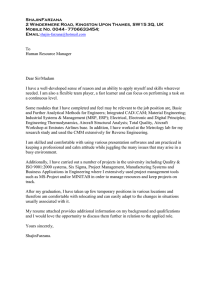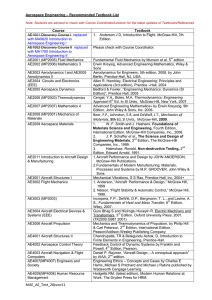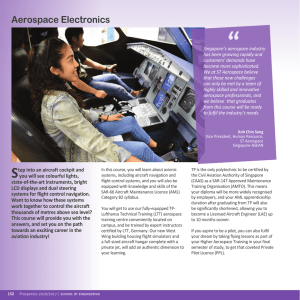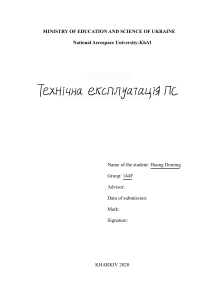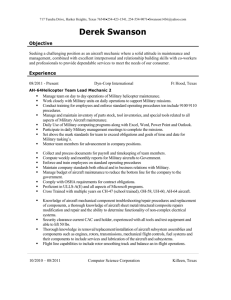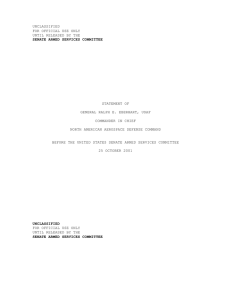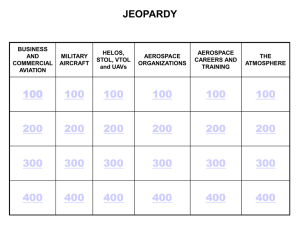Aircraft Design: A Conceptual Approach (AIAA Education Series)
advertisement
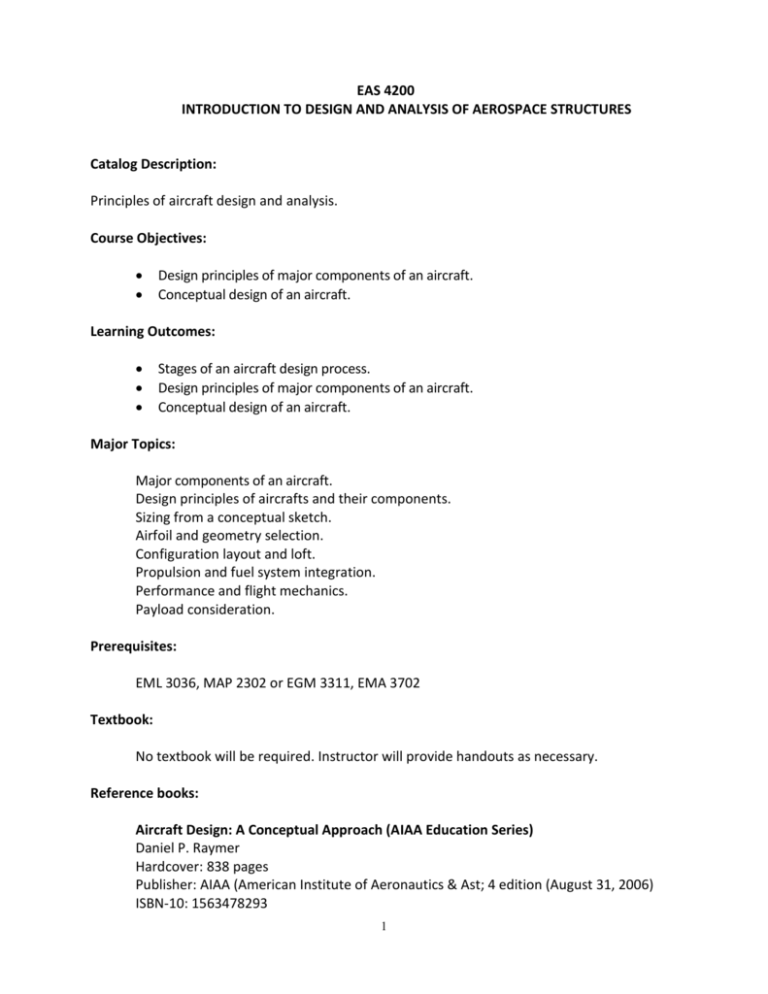
EAS 4200 INTRODUCTION TO DESIGN AND ANALYSIS OF AEROSPACE STRUCTURES Catalog Description: Principles of aircraft design and analysis. Course Objectives: Design principles of major components of an aircraft. Conceptual design of an aircraft. Learning Outcomes: Stages of an aircraft design process. Design principles of major components of an aircraft. Conceptual design of an aircraft. Major Topics: Major components of an aircraft. Design principles of aircrafts and their components. Sizing from a conceptual sketch. Airfoil and geometry selection. Configuration layout and loft. Propulsion and fuel system integration. Performance and flight mechanics. Payload consideration. Prerequisites: EML 3036, MAP 2302 or EGM 3311, EMA 3702 Textbook: No textbook will be required. Instructor will provide handouts as necessary. Reference books: Aircraft Design: A Conceptual Approach (AIAA Education Series) Daniel P. Raymer Hardcover: 838 pages Publisher: AIAA (American Institute of Aeronautics & Ast; 4 edition (August 31, 2006) ISBN-10: 1563478293 1 ISBN-13: 978-1563478291 Aircraft Performance & Design John Anderson Hardcover: 600 pages Publisher: McGraw-Hill Science/Engineering/Math; 1 edition (December 5, 1998) ISBN-10: 0070019711 ISBN-13: 978-0070019713 Class Schedule: TR 6:25pm - 7:40pm in EC1116. ________________________________________________________________________ Grade will be determined on the basis of 1 midterm exam 25% Final project 50% Final Exam 25% ________________________________________________________________________ Tentative Grading Scheme: 95 and above A 90 – 94.99 A85 – 89.99 B+ 80 – 84.99 B 77 – 79.99 73 – 76.99 70 – 72.99 65 - 70 B- 60 - 65 D C+ Below 60 F C C- My office hours are on Tuesday 2:00pm-4:45pm and also by appointment. Please come to see me if you are having problems or have suggestions on how to improve this rather compact course. This is a preliminary syllabus subject to change. All changes will be announced in class Contact information Igor Tsukanov Office EC 3443 E-mail igor.tsukanov.fiu@gmail.com Office phone (305)-348-6103 2 Program Educational Outcomes: Mechanical & Materials Engineering Program Educational Outcomes (a) Ability to apply knowledge of mathematics including statistics, multivariable calculus and differential equations, science including physics, and engineering (b) Ability to design and conduct experiments, as well as to analyze and interpret data (c) Ability to design a system, component, or process to meet desired needs Mark X if Applies Description X Students have to learn analytic and numerical analysis methods of aircrafts and their components. X Using the knowledge obtained in the class students should be able to design and analyze structural elements of aerospace structures. (d) Ability to function on multidisciplinary teams (e) Ability to identify, formulate, and solve engineering problems X (f) Understanding of professional and ethical responsibility X (g) Ability to communicate effectively X Students should be able to formulate and solve analysis problems for components of aerospace structures. Students should understand their responsibility for designing safe structures. During the course students will have to complete and present in the class a course project which will require a team effort. (h) Broad education necessary to understand the impact of engineering solutions in a global and societal context (i) Recognition of the need for, and an ability to engage in life-long learning X (j) Knowledge of contemporary issues X (k) Ability to use the techniques, skills and modern engineering tools necessary for engineering practice X 3 Students should understand that this course is one of their first steps towards their professional growth. The state-of-the-art overview of engineering analysis methods and techniques will be presented in the class. Students should be able to use software packages to analyze major components of aerospace structures.




